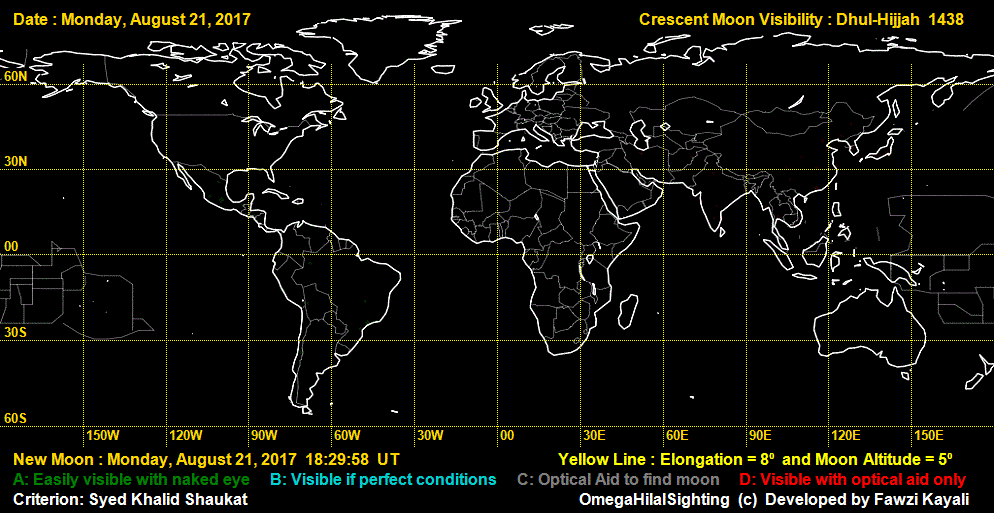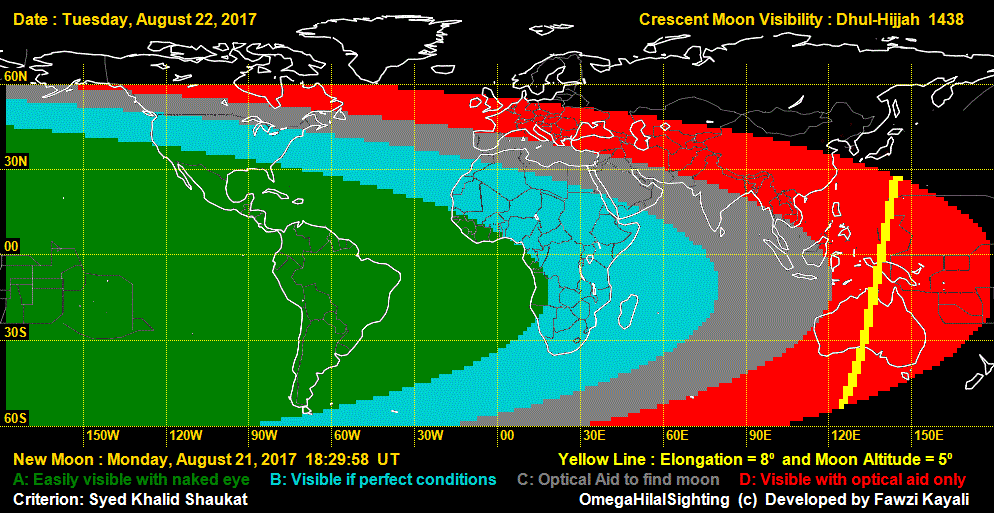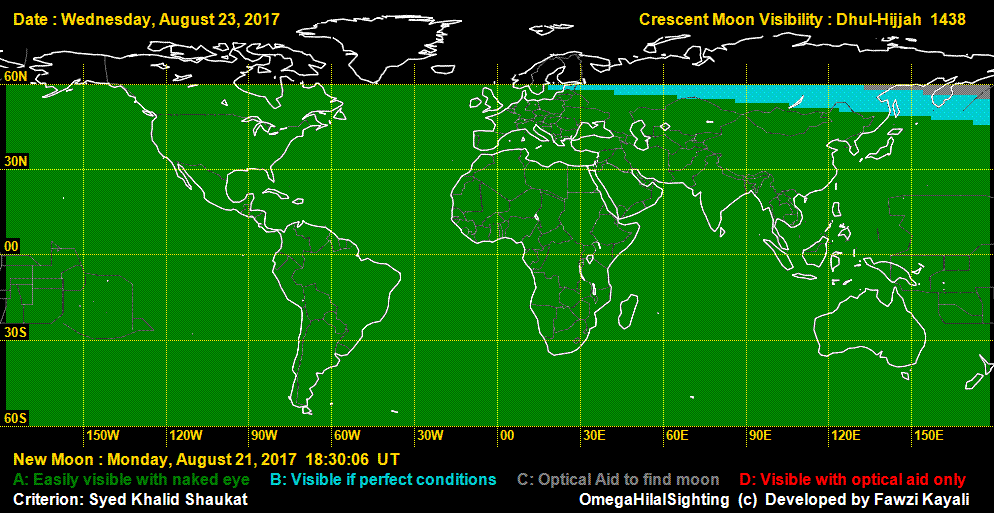Dhul-Hijjah is the 12th and final month in the Hijri Calendar. It is a very sacred month for Muslims as Hajj pilgrimage and Al-Adha feast occur during it.
Muslims perform hajj on the 8th, 9th and 10th of this month. Day of Arafah takes place on the 9th of the month. Eid Al-Adha, the “Festival of the Sacrifice”, begins on the 10th day and ends on sunset of the 13th.
The Hijri calendar is a lunar calendar, and months begin when the first crescent of a new moon is sighted. Since the lunar year is 11 to 12 days shorter than the solar year, Dhul-Hijjah migrates throughout the seasons.
As observed from earth, the lunar phase is the shape of the luminous portion of the moon.
Moon phases change as the Moon orbits the Earth, according to the changing positions of the Moon and Sun.
The lunar terminator is the boundary between the luminous and dark hemispheres. Each of the four “intermediate” lunar phases is roughly seven days. Yet, this varies slightly due to the elliptical shape of the Moon’s orbit.
The moon travels the same path all year round. When we see it in the east, we see it traveling towards the west. Any country sees the moon within a 24-hour period once spotted by its eastern neighbor.
The first 10 days of Dhul-Hijjah are the most holy days in which to do good deeds.
Narrated Ibn Abbas: The Prophet (PBUH) said, “No good deeds done on other days are superior to those done on these (first ten days of Dhul-Hijjah).” Then some companions of the Prophet said, “Not even Jihad?” He replied, “Not even Jihad, except that of a man who does it by putting himself and his property in danger (for Allah’s sake) and does not return with any of those things.” (Reported by Tirmidhi).
Prophet Muhammad (PBUH) used to fast the first nine days of this month, owing to their perceived virtue: One of the wives[vague] of Muhammad said: “Allah’s Messenger used to fast the [first] nine days of Dhul-Hijjah, the day of ‘Ashurah, and three days of each month.” (Reported by Abu Dawud).
Dhul-Hijjah’s Astronomical Calculations
For naked eye observation of the crescent, you need an open western horizon. The site must have a clear sky and an above-sea level altitude.
The observer should go to the observing site on the 29th of the Hijri month. Then the observer has to look for the crescent at the west during sunset. If the observer sees the crescent, this automatically means that new Hijri month has started, while if the observer doesn’t see the crescent this means that the next day will be the 30th and last day of the current month.
The crescent must be obvious after the sun sets. Otherwise, if the observer noticed the crescent with the naked eye before sunset –almost impossible- he wouldn’t count that as the crescent of the first day of a lunar month.
If the observer sees the crescent having its horns facing downwards, this would mean the observer has seen the Waning Crescent which is the crescent of the end of a lunar month.
Hence, a lunar month must start with what we call a Waxing Crescent which is the correct crescent of the beginning of the lunar month with its horns facing upwards.
The eight principal and intermediate phases which take place during a Hijri month are, in sequential order: New Moon, Waxing Crescent, First Quarter, Waxing Gibbous, Full Moon, Waning Gibbous, Last Quarter, and Waning Crescent.
The Astronomical New Moon (conjunction) was on Monday August 21, 2017 at 18:30 UT. It occurred after the Total Solar Eclipse which started at 15:46 UT on that same day; therefore, the crescent moon wasn’t seen anywhere in the world since it was facing the sun directly before 18:30 UT.
On Tuesday August 22, the moon may not be seen in Europe, and it will be hard to see in Southeast Asia. However, it will be easily be seen in West Africa and Americas.
On Wednesday August 23, the rest of the world can see the moon. These astronomical observations and calculations mean that the first day of Dhul-Hijjah will occur on Wednesday August 23, 2017. And Eid Al-Adha will be on September 1.
Check the following astronomical maps of moon sightseeing to discover the beginning of Dhul-Hijjah month of the Hijri Year 1438 at your location.

Monday, August 21, 2017

Tuesday, August 22, 2017

Wednesday, August 23, 2017
